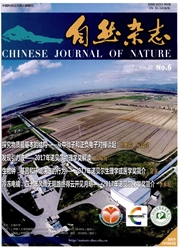

 中文摘要:
中文摘要:
摘要树线上树木生长主要受生长季低温限制,因此气候变暖将导致高山树线向更高海拔迁移。然而,全球树线调查数据显示,近百年来约50%调查样点树线上升明显,其余则保持静止状态。以上事实揭示,除了气候因素,非气候因素(如竞争等种间关系)也在一定程度上调控着树线的位置变化。青藏高原拥有全球海拔最高的天然树线,是探讨气候和非气候因素对树线变化影响的理想区域。研究发现:树线之上低矮稀疏的灌丛或草丛成为幼苗荫发或生长的“避难所”,从而有利于树线大幅度爬升:而高大茂密的灌丛则会形成一道宽厚的”封锁墙”,从而抑制树线的上升。因此,变暖背景下树线位置倾向于向更高海拔爬升,但爬升速率受到树线之上种间关系的调控。变暖并不一定会造成树线位置的显著上升。
 英文摘要:
英文摘要:
Tree growth at treelines is generally limited by low temperature so that wanning tends to shift treeline upward. However, a global meta-analysis showed that treelines shifted upward at around 50% during the last century among the investigated treelines, and others kept static. Such evidence suggested that non-climate factors (such as interspecific competition) apart from climatic factors controlled treeline shift. The Tibetan Plateau hosts the highest treeline in the Northern Hemisphere, being a good locale for investigating climatic and biotic factors influencing treeline changes. As showed by our research, short and sparse shrub and grass acted as "tree nurseries" for recruitment, and benefitted treeline upward shift. Dense shrubs just above treeline inhibited tree establishment, and slowed upward movement of treelines. Climatic warming tended to promote the upward shift of alpine treelines at local and regional scales. However, upslope migration rates were controlled largely by interspecific interactions. Wanning may not cause the upward shift of treelines if dense shrub dominate the above treelines.
 同期刊论文项目
同期刊论文项目
 同项目期刊论文
同项目期刊论文
 期刊信息
期刊信息
